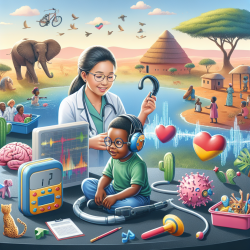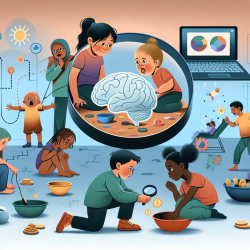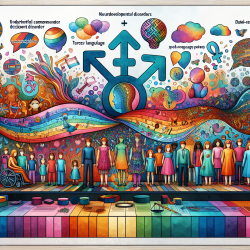Introduction
Bone-conduction hearing devices (BCHDs) have emerged as a vital tool in addressing conductive hearing loss, particularly in regions with limited healthcare resources. The recent study, "Outcomes and Device Use in Children with Bone-Conduction Hearing Devices in South Africa," provides valuable insights into the functional outcomes of children using BCHDs. This blog explores how practitioners can leverage these findings to enhance their practice and encourages further research in this area.
Understanding the Research Outcomes
The study reviewed the use of BCHDs in 79 children from South Africa, focusing on device usage and auditory performance as measured by the Parents’ Evaluation of Aural/Oral Performance of Children (PEACH) and the Teachers’ Evaluation of Aural/Oral Performance of Children (TEACH). Key findings include:
- Average device usage was 7.0 hours per day, below the recommended 10 hours for optimal outcomes.
- 93.3% of children reportedly wore their BCHDs 'always' or 'often', with 80% showing typical auditory performance at the 1-month follow-up.
- Higher BCHD use correlated with better functional listening performance scores.
Implications for Practitioners
For practitioners, these findings highlight the importance of ensuring consistent device use to maximize auditory benefits. Here are some strategies to consider:
- Encourage Consistent Use: Educate caregivers and teachers on the importance of consistent BCHD use and provide strategies to integrate device use into daily routines.
- Monitor and Evaluate: Utilize tools like PEACH and TEACH to regularly assess auditory performance and adjust intervention plans as needed.
- Address Barriers: Identify and mitigate barriers to device use, such as discomfort or social stigma, through counseling and support groups.
Encouraging Further Research
The study underscores the need for continued research into BCHD outcomes, particularly in low-resource settings. Practitioners are encouraged to contribute to this body of knowledge by:
- Conducting Longitudinal Studies: Investigate long-term outcomes of BCHD use to better understand its impact on language development and academic performance.
- Exploring Technological Innovations: Evaluate new BCHD technologies and their effectiveness in different environments and populations.
- Collaborating with Global Partners: Share findings and best practices with international colleagues to enhance global understanding and application of BCHDs.
Conclusion
The research on BCHDs in South Africa offers valuable insights for practitioners aiming to improve outcomes for children with hearing loss. By implementing the study's findings and engaging in further research, practitioners can enhance their skills and contribute to the advancement of pediatric audiology.
To read the original research paper, please follow this link: Outcomes and device use in children with bone-conduction hearing devices in South Africa.










